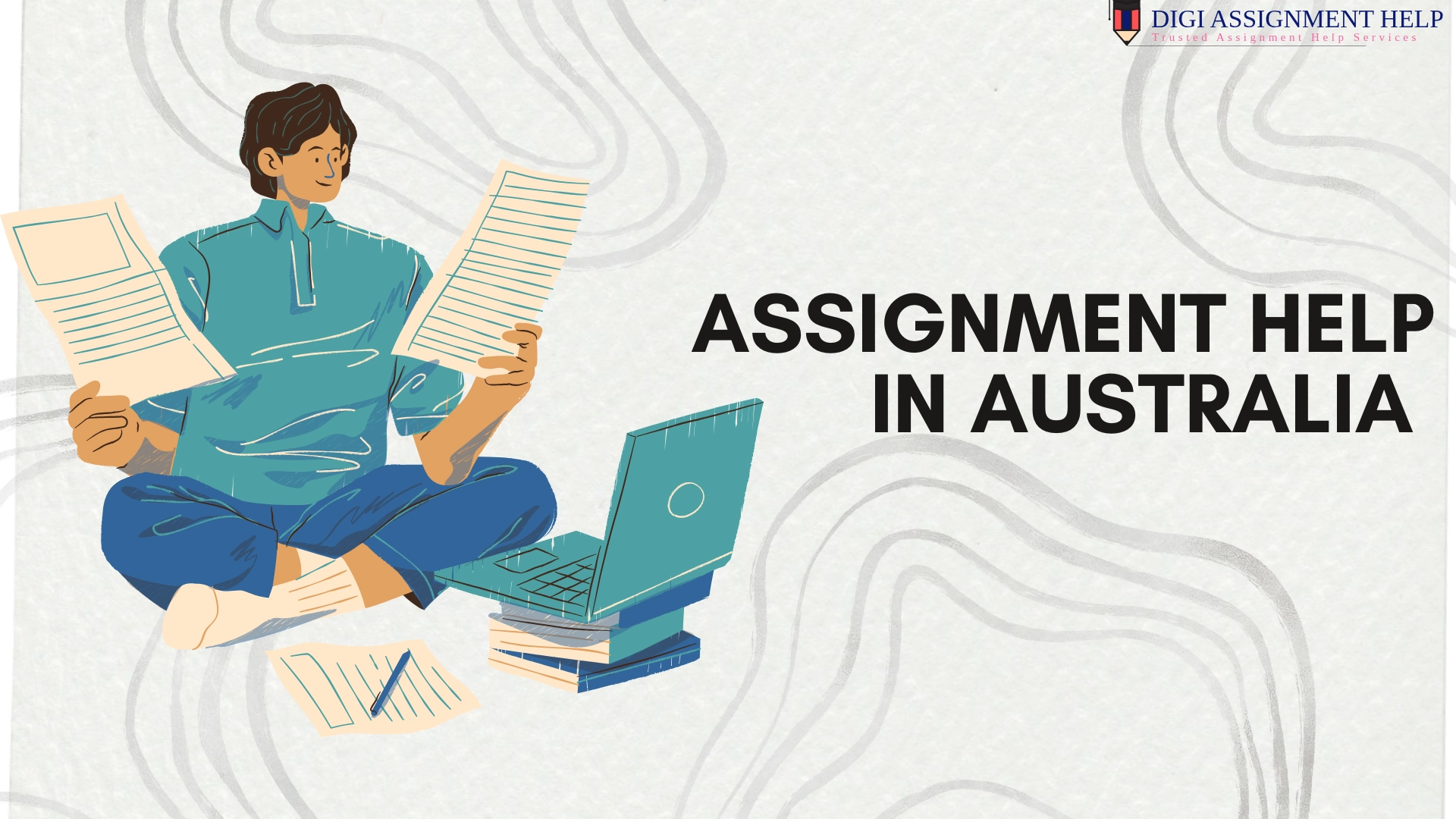Accounting & MYOB: How To Nail Practical Business Simulations
 08-Aug-2025 07:43 AM
08-Aug-2025 07:43 AM

Such simulations reflect actual business situations, where you are required to process transactions, run reports, and analyse performance, just as you would in an actual business. Though these assignments are very useful in developing industry-ready skills, they can also be daunting, particularly for inexperienced students of accounting software. That's where accounting assignment help comes into play. It's not shortcuts, it's about assistance, understanding, and facilitation through experiential learning tools.
In this blog, we’ll look at how to approach accounting and MYOB-based simulations strategically, avoid common errors, and leverage expert support when needed. Whether you’re aiming for top grades or practical mastery, this guide is your roadmap to success.
What Are Practical Business Simulations in Accounting?
Practical business simulations are case studies or assignments that mirror actual business and accounting situations in real life. Rather than writing essays or providing theory-based answers, students are required to:- Build a company file in MYOB or equivalent software
- Make recordings of sales, purchases, and payroll
- Prepare reports such as profit and loss statements, balance sheets, and cash flow statements
- Carry out bank reconciliations
- Evaluate business performance against the reports generated
These simulations prepare you for employment roles in finance, accounting, management, and consulting. They're not merely about numbers—about decision-making, time management, and compliance.
Why Are MYOB-Based Simulations Significant?
MYOB (Mind Your Own Business) is among Australia's most popular accounting computer systems, particularly for small and medium businesses (SMEs). Universities and TAFEs incorporate MYOB within simulations because:- It complies with ATO (Australian Tax Office) standards
- It teaches students GST processing and preparation of BAS
- It teaches bookkeeping and reporting in real-time
- It exposes students to payroll systems, inventory, and reconciliation of accounts
This is why MYOB assignment assistance is highly required—students require more than mere theory to make it through.
Top Issues Faced by Students in Accounting & MYOB Simulations
1. Software Setup
Most students experience setup hassles with MYOB because they don't receive much training, or there are issues with the software.Regularly update your version of MYOB and go through the student license activation process as recommended by your university. Alternatively, you may seek MYOB assignment assistance services that provide remote software installation guidance.
2. Improper Chart of Accounts
Selecting improper account categories can disrupt the entire balance sheet. Make sure you know which accounts to list under assets, liabilities, equity, income, and expenses. MYOB allows you to tailor your chart; do this with care or seek professional advice.3. GST and Tax Code Errors
Entering the incorrect tax codes will lead to improper BAS reports. Always check if a transaction is taxed. If in doubt, contact your instructor or an accounting assignment assistance platform well-acquainted with local tax regulations.4. Poor Understanding of Bank Reconciliation
Reconciliation mistakes are made when students do not reconcile bank feeds or record withdrawals/deposits incorrectly.Compare your bank statement with MYOB records line by line, always. Many providers of MYOB assignment help give templates and checklists to make this process easier.
5. Inability to Interpret Reports
Students tend to create reports without realising they do so, missing the simulation's purpose.Practice reading profit and loss statements, trial balances, and cash flow statements. These reports are the tale of a business's financial well-being. If necessary, management assignment solutions can teach you business analysis on these reports.
Step-by-Step Guide: How to Ace Your Accounting & MYOB Simulation
Step 1: Read the Simulation Brief ThoroughlyUnderstand what is required: setup, entering the transaction, reporting, and analysis. Prepare a checklist of deliverables and due dates.
Step 2: Install and Set Up MYOB
Ensure your software version is the same as required for the course. Set up a new company file with the correct financial year, GST setup, and chart of accounts.
Step 3: Enter Opening Balances
Refer to the assignment to include opening balances for assets, liabilities, and owner's equity. Errors here can ruin your reports later.
Step 4: Record Transactions
Enter sales, purchases, payroll, expenses, and inventory entries. Pay special attention to:
- Correct dates
- Proper account selection
- Tax codes
- Customer/supplier names
- Payment modes
Step 5: Bank Reconciliation
Reconcile your MYOB bank files with the given bank statement. Identify any discrepancies or missing transactions.
Step 6: Generate Reports
Common reports include:
- Balance Sheet
- Income Statement
- Aged Receivables/Payables
- GST/BAS Summary
- Trial Balance
Step 7: Interpret and Analyse
Where many students go wrong, this section is crucial. Ask yourself:
- Is the business profitable?
- Are liabilities rising?
- What's the trend in cash flow?
- What would you recommend to the manager as a manager?
Common Grading Criteria in MYOB & Accounting Assignments
Knowing what markers seek will ensure you direct your efforts:| Criteria | Weightage |
| Proper MYOB configuration | 10–15% |
| Transaction entry accuracy | 25–30% |
| Observance of GST and ATO regulations | 10% |
| Generation of reports | 20% |
| Business analysis & insights | 20–25% |
| Presentation and formatting | 5–10% |
How Accounting & MYOB Assignment Help Can Make a Difference
Not all students have pre-existing knowledge of accounting software or practical business reporting. That's where professional accounting assignment help services fill the gap.Benefits include:
- Step-by-step instructions on the use of MYOB
- Pre-prepared templates to simulate usage
- One-to-one coaching for accounting principles
- Assistance with business analysis
- Well-referenced and accurate report writing
- Formatting error-free reports
- On-time delivery for tight deadlines
Australian students balancing part-time work and study tend to use MYOB assignment help as an intelligent means to cope with academic pressures.
Avoid These Common Pitfalls in MYOB Simulations
- Not backing up your company file
- Ignoring warning messages from MYOB
- Forgetting to update tax tables (for payroll activities)
- Not saving reports in the necessary formats
- Misunderstanding the distinction between accrual and cash accounting
Conclusion
Accounting and MYOB simulations are not academic exercises; these are real-life practice runs for actual careers. The more effort you put into learning the tasks, the more job-ready and confident you'll be.If you’re stuck, remember you don’t have to do it all alone. Professional accounting assignment help, MYOB assignment help, and management assignment help services are designed to empower your learning, not replace it.
Need help? Contact our experts today!
FAQs About Accounting and MYOB Assignment Help
1. Would it be cheating to use MYOB assignment assistance?No. They are meant to help you learn, not to do the assignment for you (unless it's a model solution). Provided you use the assistance ethically, it's fine.
2. I have never used accounting software before. What should I do?
That's okay. Most students learn it in the course of studying. Assignment assistance websites provide step-by-step instructions and even screen-sharing sessions to assist beginners.
3. Do management assignment services help with management analysis?
Yes. Management assignment services help in the analysis of financial reports, the preparation of executive summaries, and the provision of suggestions for improvements.
4. What are MYOB assignment services priced in Australia?
Price depends on urgency and complexity. Most service providers provide student-friendly packages and special discounts.
5. Can I receive assistance on weekends and public holidays?
Yes. Most assignment writing companies are open 24/7 to accommodate students during the peak submission times, such as weekends and public holidays.



























